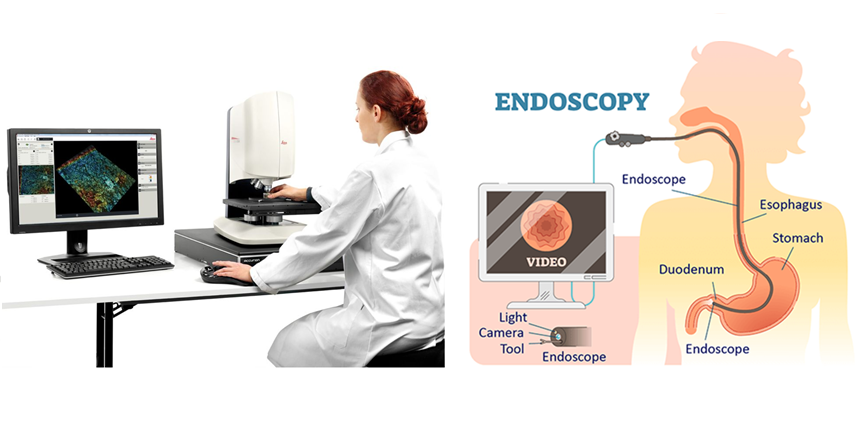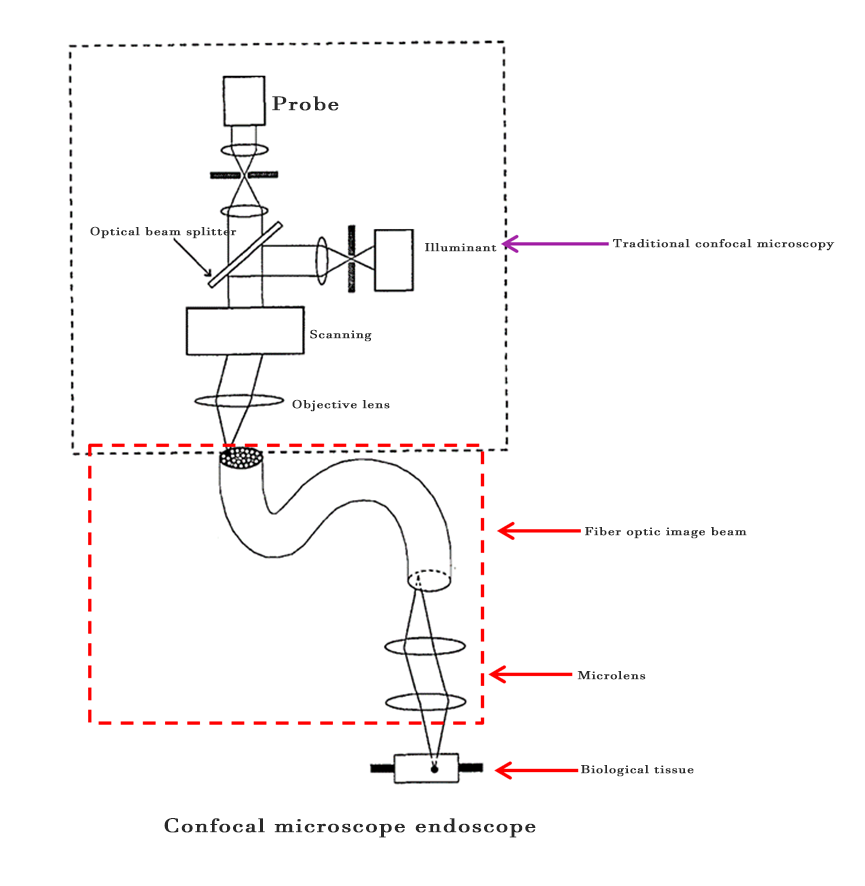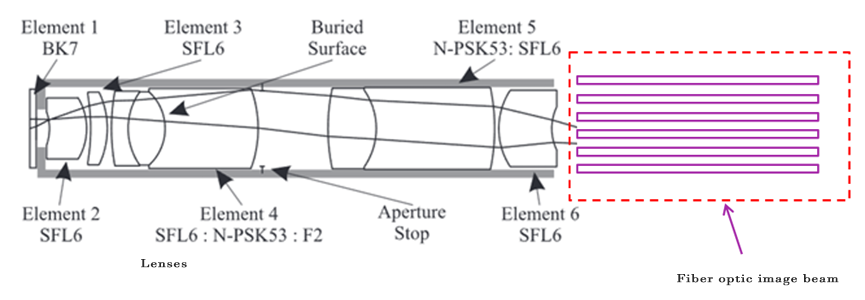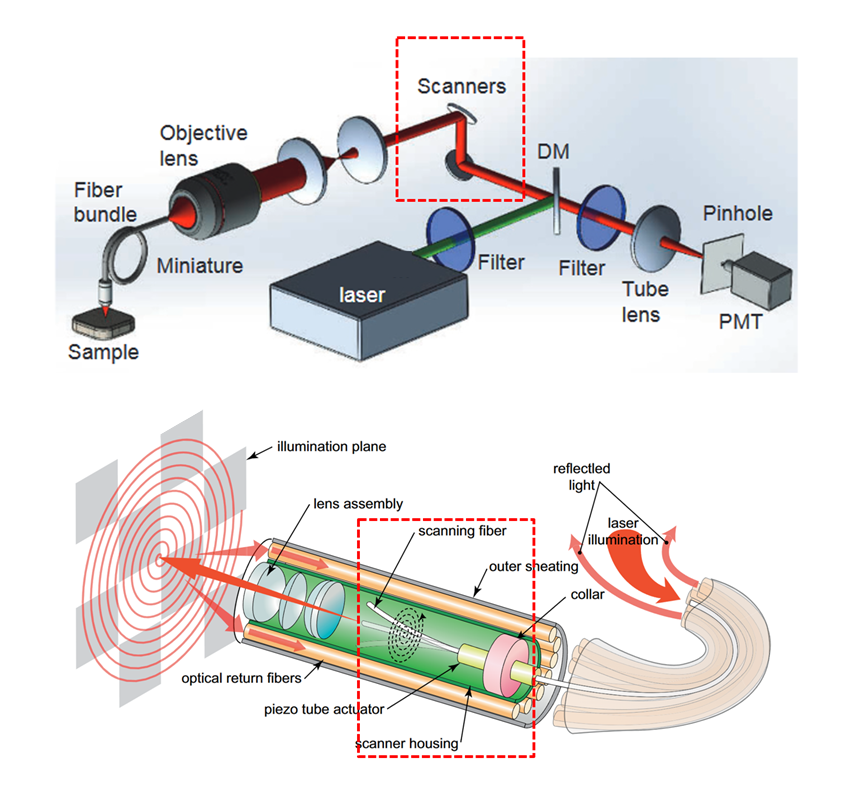The principle of confocal endomicroscopy is based on the confocal microscope, which is typically large in size. Directly inserting a confocal microscope into the human body is clearly impractical. Medical endoscopes, such as those used for gastrointestinal examinations, need to enter the body through the digestive tract, so the diameter of the endoscope is usually less than 10mm, leaving very limited space. Therefore, it is also impractical to directly embed a confocal microscope into the endoscope.

Is there something that can match the length of existing flexible endoscopes, is flexible and bendable, and can still ensure a certain level of image quality? The answer is: fiber optic imaging bundles. As shown in the figure below, the structure of a confocal endomicroscope essentially adds a fiber optic imaging bundle to the basic confocal microscope. The end face of the fiber optic imaging bundle is placed at the focal plane of the objective lens.

To enhance the signal-to-noise ratio of the image, we add a very small microscope lens in front of the fiber optic imaging bundle near the sample end, as shown in the figure below. The end face of the fiber optic imaging bundle near the sample is positioned at the image-side focal plane of the lens. In this way, each fiber in the fiber optic imaging bundle corresponds to one pixel of the image. From this correspondence, we can infer that as long as the magnification of the microscope lens is sufficient and each individual fiber is thin enough, theoretically, a relatively high lateral resolution can be achieved.

Scanning Methods of Confocal Endomicroscopy
A confocal microscope can only image one point at a time, and the complete image of the entire field of view is obtained by scanning and accumulating these points. Confocal endomicroscopy is based on the same principle and therefore also requires scanning. According to the scanning method, it can be divided into two types: if the scanning mechanism is placed in the confocal microscope, it is called proximal scanning. If the scanning mechanism is placed at the distal end of the endoscope, it is called distal scanning.

Bena Optics has extensive experience in the design, manufacturing, and assembly of endoscope systems and is a creator of various types of endoscope systems.